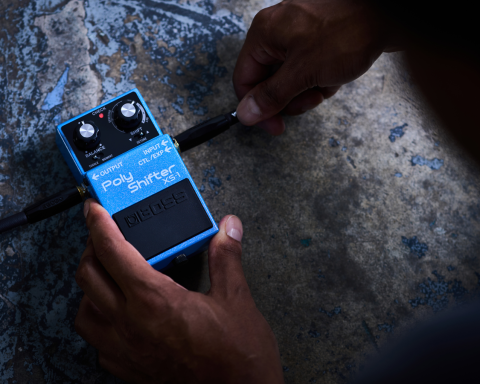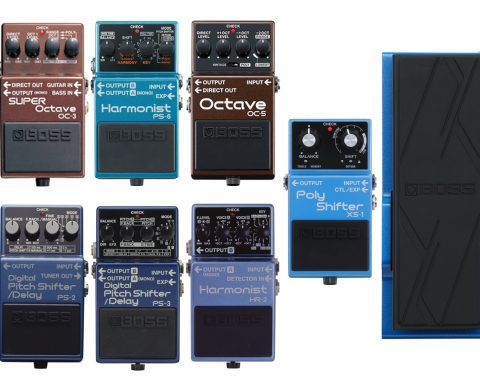It seems as if BOSS compact pedals appeared overnight when the OD-1 OverDrive, PH-1 Phaser, and SP-1 Spectrum debuted in 1977. But nothing could be further from the truth. These seminal effects units were the result of years of experience and painstaking research. It began in the fuzzy realm of ’60s stompboxes. With the release of the new Waza Craft FZ-1W Fuzz, BOSS has come full circle from its roots in ’60s psychedelic rock.

A Legacy of Breaking Ground
Nowadays, it’s all too easy to take BOSS compact effects pedals for granted. Like other icons of the guitar world, they are so familiar to us that we rarely stop to appreciate the genius of their design. But they were a game-changer when they arrived on the scene in 1977. The pedals raised the bar on several fronts. These included consistency, reliability, ergonomics, and signal quality. BOSS set a benchmark for all that followed.
BOSS didn’t just set new standards for pedal manufacturing quality, however. These stompboxes pioneered new sounds too. New languages, even. For example, nobody knew what a “chorus” pedal was before the first BOSS pedal, the CE-1 Chorus Ensemble, landed in 1976. Similarly, the term overdrive came into common usage after the first compact pedal, the BOSS OD-1 OverDrive, debuted in 1977.
"The term overdrive came into common usage after the release of the BOSS OD-1 OverDrive, in 1977."
The Prehistory
The 1960s were a heady time for guitar effects, with the very first fuzz pedal arriving in 1962: the Maestro Fuzz-Tone FZ-1. Based on the Maestro Fuzz-Tone FZ-1/FZ-1A, the FM-1 Fuzz Master made the popular fuzz effect accessible to hip Japanese guitar players. This community felt the absence of imported British or American-made pedals.
During the late ’60s, Japan was the birthplace of many pedals designed specifically for psychedelic rock sounds. The Psychedelic Machine was a multi-effects unit comprising the original FY-6/Super Fuzz and Uni-Vibe circuits. Along with the standalone FY-6 circuit Baby Crying fuzz pedal, both were influential in the evolution of guitar effects.
Flavors of Fuzz
The FY-6 fuzz circuit led to many pedals. Perhaps the best-known of these came from the American Univox brand. Univox pedals thrilled some of the most influential guitarists of the era. The Who’s Pete Townshend used a Super Fuzz, and Jimi Hendrix’s timeless Uni-Vibe tones continue to inspire guitarists a half-century later. With fuzz in its heyday, Japan’s population of electric guitar players didn’t have to wait long before the first Roland stompboxes.
"During the late '60s, Japan was the birthplace of many pedals designed specifically for psychedelic rock sounds."

BeeGee AF-60, Photo by Roadside Guitars, (Creative Commons)
BeeBaa, BeeGee, and Beyond
The first Roland effects pedal was 1972’s AF-100 BeeBaa. Housed in a fire-engine-red enclosure, the AF-100 featured a formidable booster section, stomp switches labeled Effect/Normal and Fuzz/Booster, and a Fuzz control with Volume, Tone, and Sustain. Additionally, the BeeBaa sported a third stomp switch labeled Fuzz Tone Select. In a similar vein to the Super Fuzz, it provides two vastly different tonal styles, allowing guitarists of the era to explore a range of fuzz options.
The next Roland pedal releases stayed on trend with the era’s predilection for branding effects units with colorful names. The AD-50 Double Beat fuzz/wah, along with the two-knob AF-60 BeeGee fuzz, fleshed out the early Roland A-series. The BeeGee remains popular on the vintage market and is widely praised for its ability to evoke the fizzy tones of classic garage rock fuzz.
"The BeeGee AF-60 stayed on trend with the era’s predilection for branding effects units with colorful names."
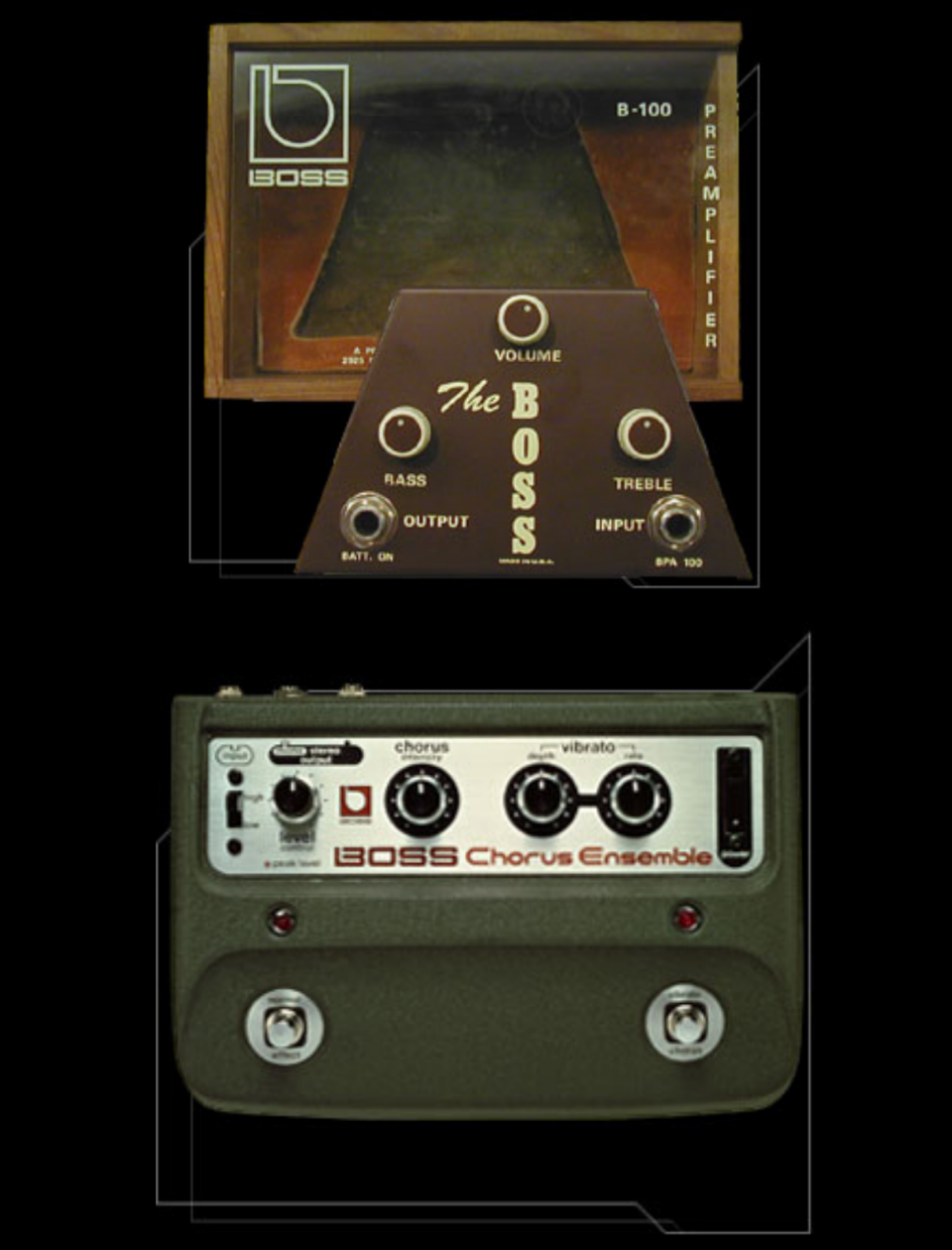
Changing Times—Changing Tones
The popularity of the electric guitar showed no sign of slowing down. Roland decided to concentrate efforts in that area under a new monicker. The BOSS name came from an acoustic guitar preamp called The BOSS B-100 Preamplifier. The famous logo is visible on the device’s case but not on the unit itself. Roland-branded pedals existed after the first BOSS stompboxes landed in 1976. However, the Compact Series soon eclipsed all existing designs.
By the late ’70s, musical tastes were changing fast. Of course, fuzz remained popular, but it was no longer cutting edge. The engineers over at BOSS concentrated on innovating new sounds. These efforts began in mid-1976 with the CE-1 Chorus Ensemble, followed by the Eddie Van Halen-endorsed GE-10 Graphic Equalizer the same year.
"During the '70s, musical tastes were changing fast. BOSS concentrated on innovating new sounds."
The New Breed
The 1977 compact pedal series ushered in a new era. In fact, the large format DB-5 BOSS Driver left the catalog devoid of fuzz stompboxes after its discontinuation in 1980. Its departure underscored a temporary hiatus of fuzz boxes. Compact pedals like the SD-1 Super OverDrive and DS-1 Distortion began to dominate the market during the ’80s.
In the late ’80s and early ’90s, a new breed of bands dubbed grunge swept across the airwaves. Bands like Dinosaur Jr. and Mudhoney helped reinvigorate the guitar world by turning a new generation on to fuzz. Indeed, J. Mascis is well-known to be an avid collector of fuzz pedals—to which his wall of saturated tone attests. Early Dinosaur Jr. albums like Bug and You’re Living All Over Me are true trips to fuzztopia. Seattle band Mudhoney’s 1988 debut EP Superfuzz Bigmuff left few guessing as to their preferred stompboxes.
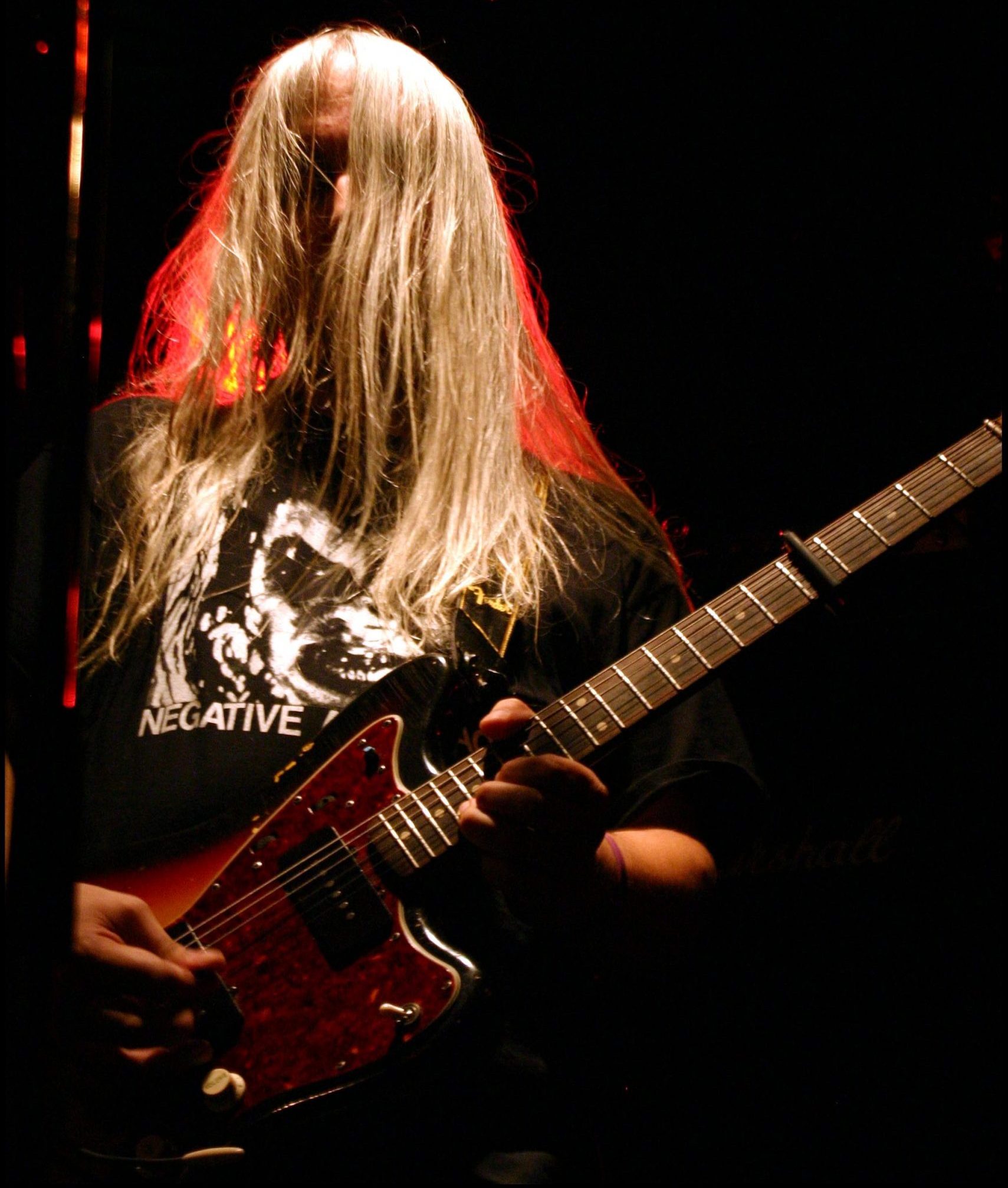
"Bands like Dinosaur Jr. and Mudhoney helped reinvigorate the guitar world by turning a new generation on to fuzz."
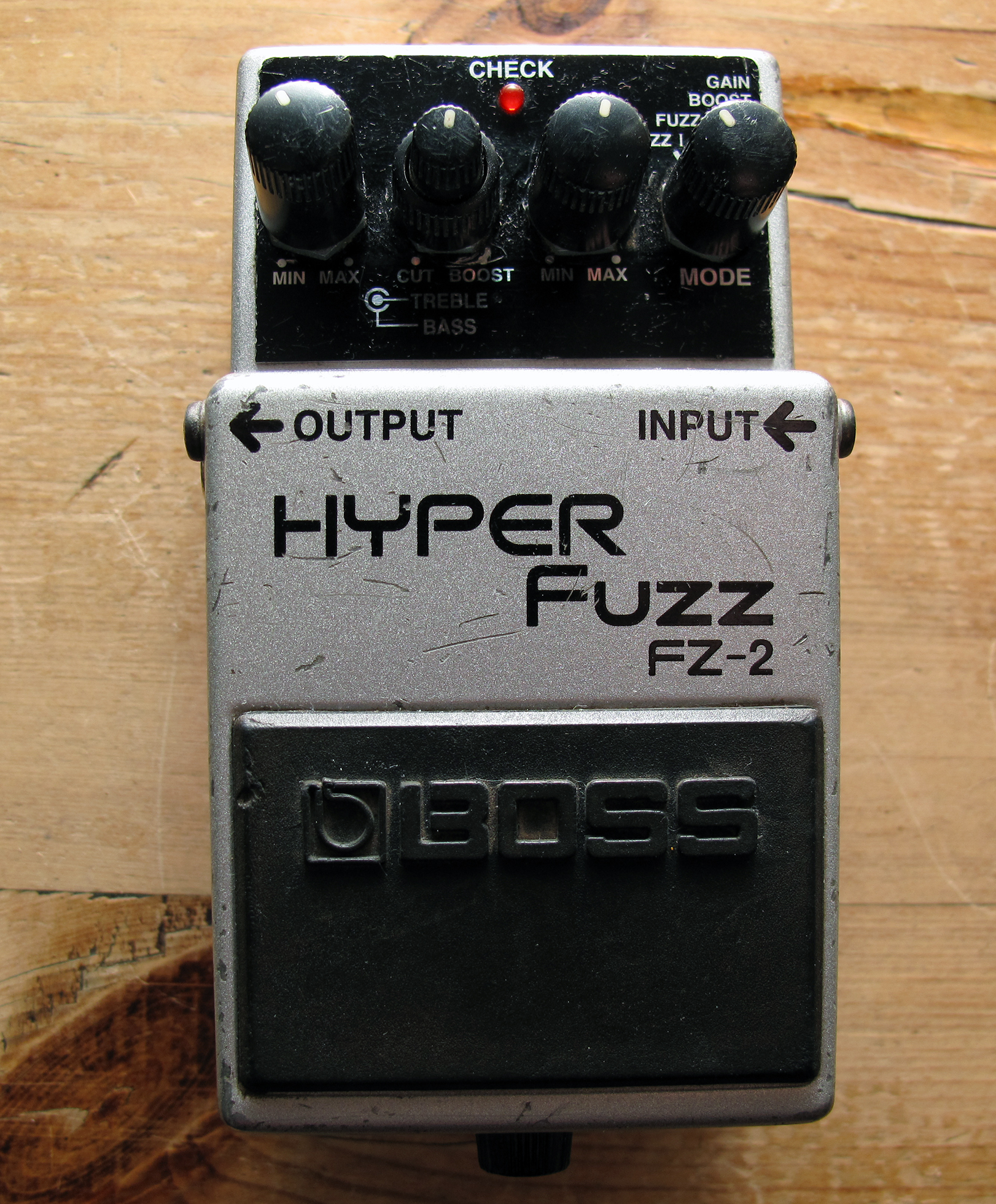
Hyperactive
In response to the growing demand for old-school fuzzes, BOSS reconnected with its ’60s heritage with the 1993 release of the FZ-2 Hyper Fuzz. It was the first BOSS fuzz in the compact pedal format and boasted dual modes labeled Fuzz I and Fuzz II. Along with Level and Gain knobs, a stacked Treble and Bass Tone Cut/Boost control allowed for flexible fuzz sculpting.
Additionally, the FZ-2 Hyper Fuzz sports a great-sounding Gain Boost mode. This was a handy addition for gain stacking and driving amps into natural breakup. Discontinued in 1997, artists from Bush to Electric Wizard favored the modern classic. It’s now sought after on the used market.
In 1997, the FZ-3 Fuzz superseded the Hyper Fuzz. It was the second BOSS compact fuzz pedal with the now-familiar retro silver metallic finish. Indeed, the FZ-3 Fuzz was a back-to-basics recreation of typical ’60s fuzz tones. The simplified layout—Level, Fuzz, and Tone knobs—provided a range of vintage-inspired sounds. Discontinued in 1999, the BOSS FZ-3 Fuzz is one of the most undiscovered stompboxes of its type. John Frusciante made great use of the pedal during the Red Hot Chili Peppers’ storied Californication era.
"Discontinued in 1999, the BOSS FZ-3 Fuzz is one of the most undiscovered stompboxes of its type."
COSM Play
The third fuzzbox of the BOSS compact pedal series arrived in 2007 in the form of the FZ-5 Fuzz. It utilized the COSM (Composite Object Sound Modeling) digital technology first developed by BOSS and Roland in the mid-’90s. The FZ-5 Fuzz precisely modeled the characteristics of three celebrated stompbox types. These were the Fuzz Face, Maestro FZ-1A, and Octavia (modes F, M, and O, respectively).
The ‘O’ setting evoked the Octavia effect developed in the ’60s by effects guru Roger Mayer for Jimi Hendrix, as first heard on “Purple Haze.” Modes F and M recreate the vintage magic of those germanium transistor units. However, they do so without the plethora of difficulties associated with such pedals.
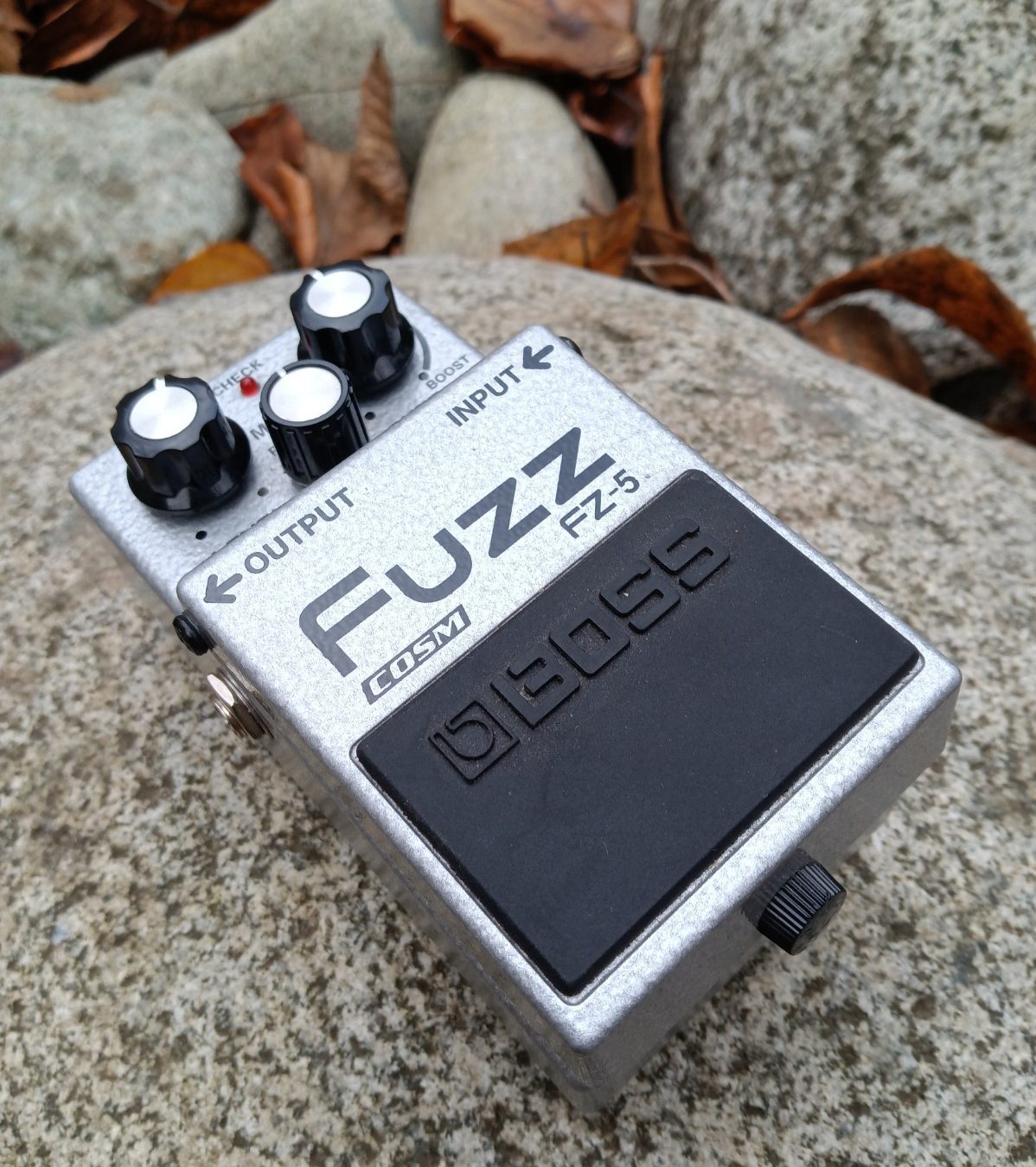
"The TB-2W collaboration demonstrated it's possible to get the best of both vintage and modern."
The TB-2W is Born
Following the internet boom of the late ’90s and early ’00s, global fuzz enthusiasts began sharing their knowledge and know-how. This means more and more people have turned on, tuned up, and fuzzed out to the joys of these stompboxes. Marking this new era was the fourth BOSS compact series fuzz pedal—the TB-2W Tone Bender.
Unveiled in late 2020, this prized pedal shipped in a limited run of 3,000 units worldwide. This was a unique collaboration with the U.K.’s legendary Sola Sound (London) Ltd company. It proved how challenging it can be to marry authentic fuzz circuits with the kind of consistency and quality BOSS customers expect.
“The first challenge was finding a source of germanium transistors,” said BOSS president Yoshi Ikegami. “And also, how to purchase such a quantity of germanium transistors. This was our first experience using such rare parts,” Ikegami revealed. “Over two years we spent a lot of time and manpower.”
Although the TB-2W Tone Bender proved challenging to mass-produce, its release was a landmark in stompbox history. It successfully united BOSS compact pedals with one of the most distinguished names in ’60s British fuzz. The collab demonstrated it’s possible to get the best of both vintage and modern.
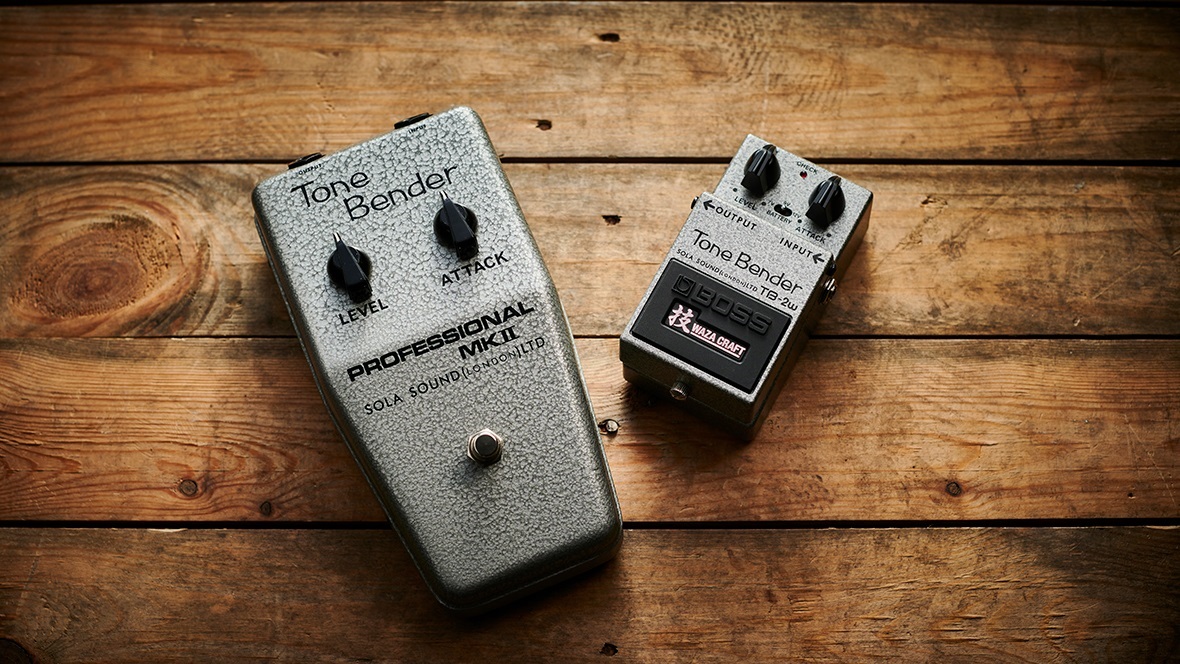
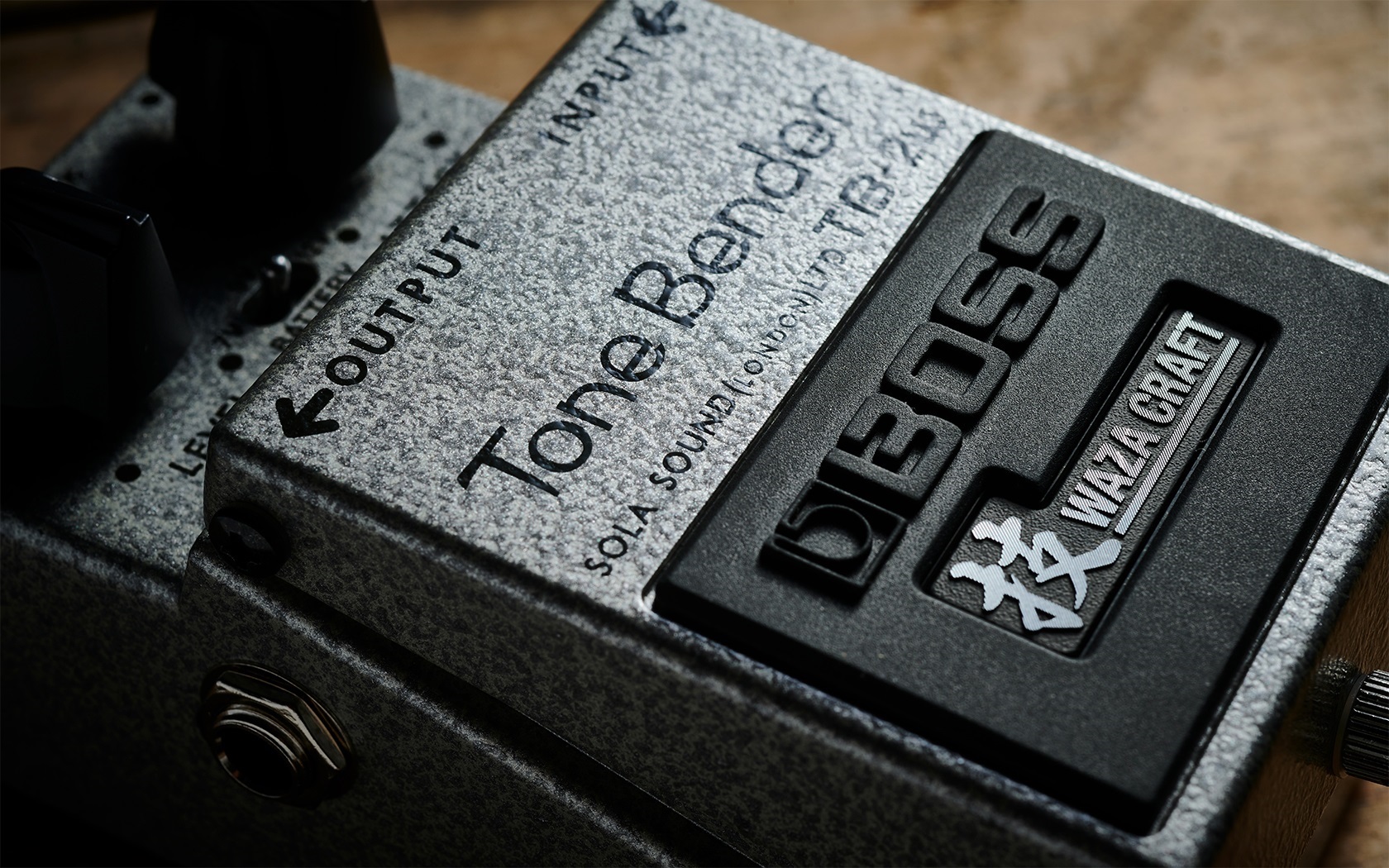
"The FZ-1W is not based on an existing unit. Rather, it is an original creation inspired by the origins of fuzz."
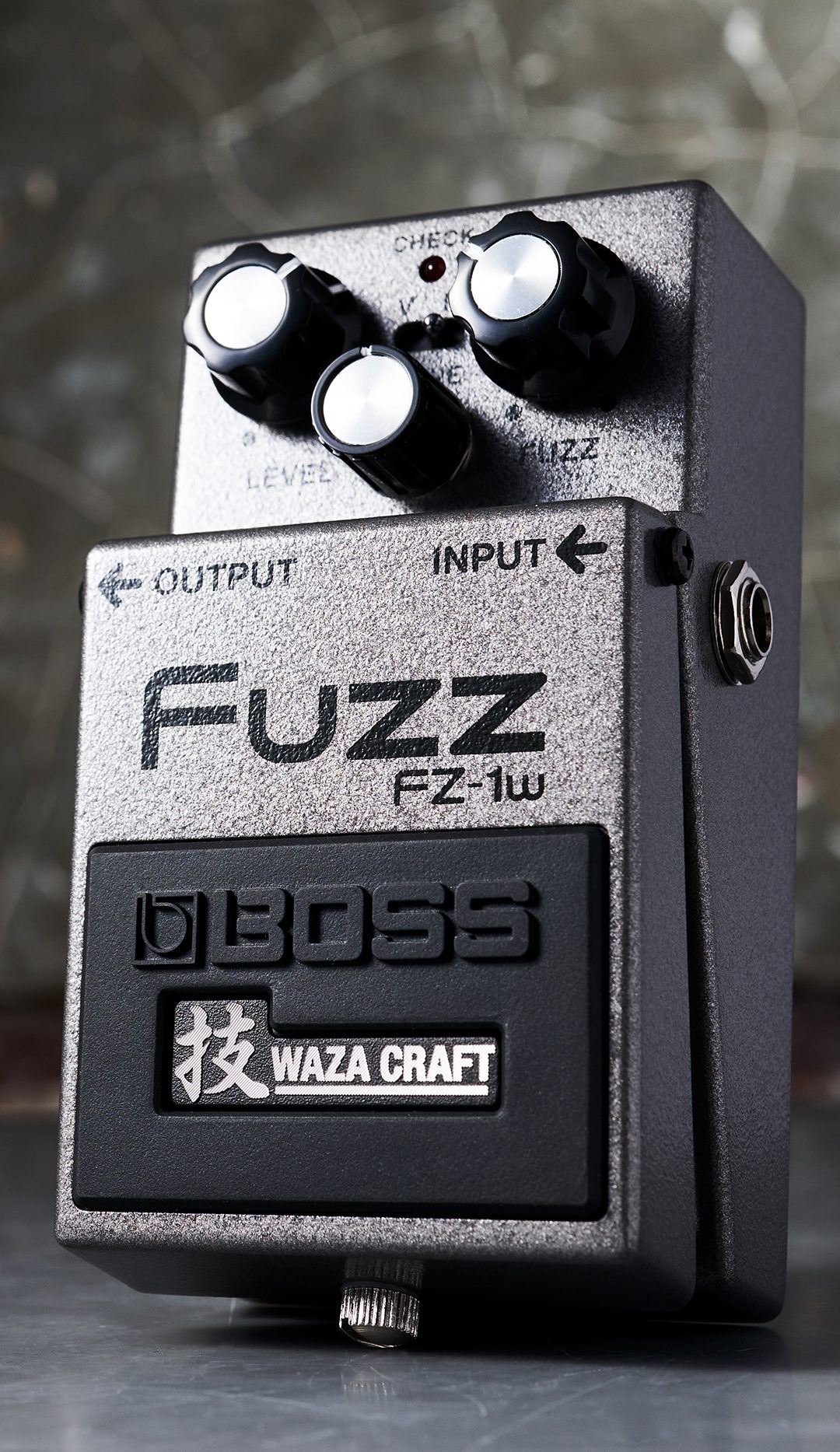
New Modes of Expression
Vintage and Modern are the themes of the most recent addition to the Waza Craft range—the FZ-1W Fuzz. It boasts two distinct modes (labeled V and M) and builds upon the insights and discoveries of the BOSS engineers’ deep-level research. They explored the behavior, response, and sonic characteristics of ’60s vintage fuzz pedals. While the FZ-1W Fuzz’s Vintage mode is mellower, Modern mode has more gain and greater midrange focus for contemporary styles.
The FZ-1W Fuzz is not fully dependent on input impedance. It features exceptional touch response and plenty of available sustain and cleans up using the guitar’s volume control. Therefore, unlike older fuzzboxes, guitarists can place it anywhere in the signal chain and retain its desirable tone. Furthermore, its flexible yet stable silicon transistor-based circuit is quieter in operation. It also resists the unwanted tonal changes associated with power supply/battery and temperature.
Encapsulating decades of expertise, the FZ-1W Fuzz redefines vintage fuzz from a fresh perspective. Unlike other Waza Craft pedals, the FZ-1W is not based on an existing unit. Rather, it is an original creation inspired by the origins of fuzz—where the BOSS stompbox story began so many years ago.






